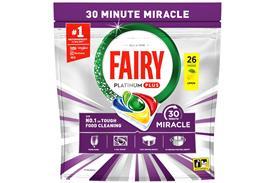With just a 2% share of the overall batteries market, the specialist sub-sector may be small but it's punching way above its weight.
The category comprises two types of product: the button cells traditionally found in watches and hearing aids but now used in a much wider range of goods; and powerful lithium cells particularly well suited to demanding devices, including digital cameras.
Growing demand for lithium cells, a premium product, has helped to push up value sales of specialist cells by 33% in the past year, while volume has risen 16.3% [Kantar Worldpanel 52w/e 13 June 2010]. It's taken a while for lithium cells to find a market, though. They were developed in the 1980s but at that time there wasn't a commercial need for batteries offering such high performance.
"There is a need now, with Mp3 players, digital radios and other devices. The market has grown considerably in the past 10 years," says Energizer MD Nick Powell. He admits lithium products currently account for only 2% of his brand's sales, but argues that the premium they carry presents a great opportunity for retailers the rsp for four AA lithium cells is £6.99, he points out.
The whole battery market can be described as device-led, as demand for a particular type or size of cell fluctuates with developments in electrical or electronic goods (suppliers still talk wistfully of the surge in demand for c-size cells brought about by mechanical singing fish Billy Bass), but nowhere is this more true than in the button cell market. Suppliers admit this means sales can go in peaks and troughs one spike was at the height of the Tamagotchi craze in the 90s, says Powell.
In the past few weeks, early adopters of 3D televisions have brought about another sales spike, says Panasonic UK sales manager Tim Clark.
"The special glasses required to view 3D images on these TVs take two button cells," he says. "Sales of these cells have increased dramatically since June, when they were launched in the UK."
Focus On Batteries
The category comprises two types of product: the button cells traditionally found in watches and hearing aids but now used in a much wider range of goods; and powerful lithium cells particularly well suited to demanding devices, including digital cameras.
Growing demand for lithium cells, a premium product, has helped to push up value sales of specialist cells by 33% in the past year, while volume has risen 16.3% [Kantar Worldpanel 52w/e 13 June 2010]. It's taken a while for lithium cells to find a market, though. They were developed in the 1980s but at that time there wasn't a commercial need for batteries offering such high performance.
"There is a need now, with Mp3 players, digital radios and other devices. The market has grown considerably in the past 10 years," says Energizer MD Nick Powell. He admits lithium products currently account for only 2% of his brand's sales, but argues that the premium they carry presents a great opportunity for retailers the rsp for four AA lithium cells is £6.99, he points out.
The whole battery market can be described as device-led, as demand for a particular type or size of cell fluctuates with developments in electrical or electronic goods (suppliers still talk wistfully of the surge in demand for c-size cells brought about by mechanical singing fish Billy Bass), but nowhere is this more true than in the button cell market. Suppliers admit this means sales can go in peaks and troughs one spike was at the height of the Tamagotchi craze in the 90s, says Powell.
In the past few weeks, early adopters of 3D televisions have brought about another sales spike, says Panasonic UK sales manager Tim Clark.
"The special glasses required to view 3D images on these TVs take two button cells," he says. "Sales of these cells have increased dramatically since June, when they were launched in the UK."
Focus On Batteries
















No comments yet